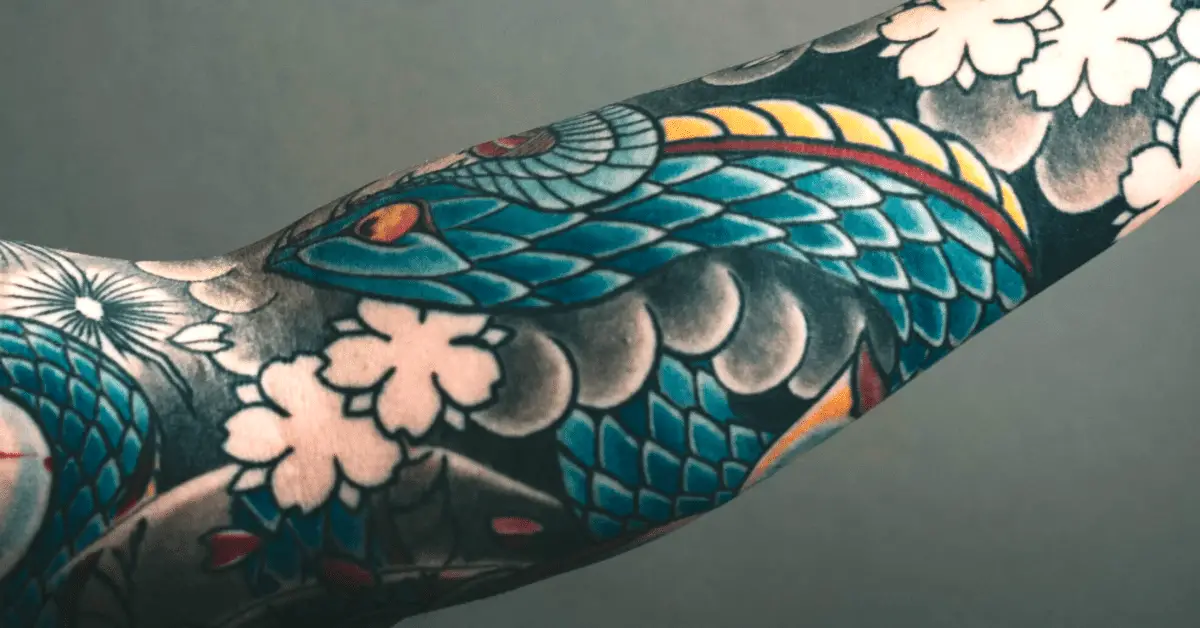Dragons bear a lot of meanings and through the years, it has been a subject of interest for body art. Dragons are imperial creatures that carry different meanings to different cultures. So, what do dragon tattoos mean? In an Eastern sense, they represent power, wisdom, and goodwill, while in Western literature, dragons epitomize peril.
Dragons are ancient mystics as told from different cultures, books, folklores, films, stories, and paintings. They are a magical creature that feeds kids’ imagination. Sometimes, a character in a film that often seen as a predator. Other times, dragons are a mythical creature that brings good luck. While in Japan, dragons are captivating subjects in ancient Japanese paintings. Thus, they are bound to be popular subjects for skin art.
The History of Dragon Tattoos
Dragons hoist diverse representations and each culture has bestowed different meanings as to what it could symbolize. During Eastern civilizations, dragons embody honor and power, their superhero image of some sort, from a modern viewpoint.
Meanwhile, in European civilizations, dragons exemplify evil and darkness. European mythologies portray dragons as villains, menacing beasts. The contrast between the opposite sides of the world is distinct.
Dragons as Skin Art
The essence of dragons as tattoos has evolved but, the antiquity of its details, however, prevailed. Although the interpretation varies from artist to artist, their cunning imagery inspires modern tattoo designs.
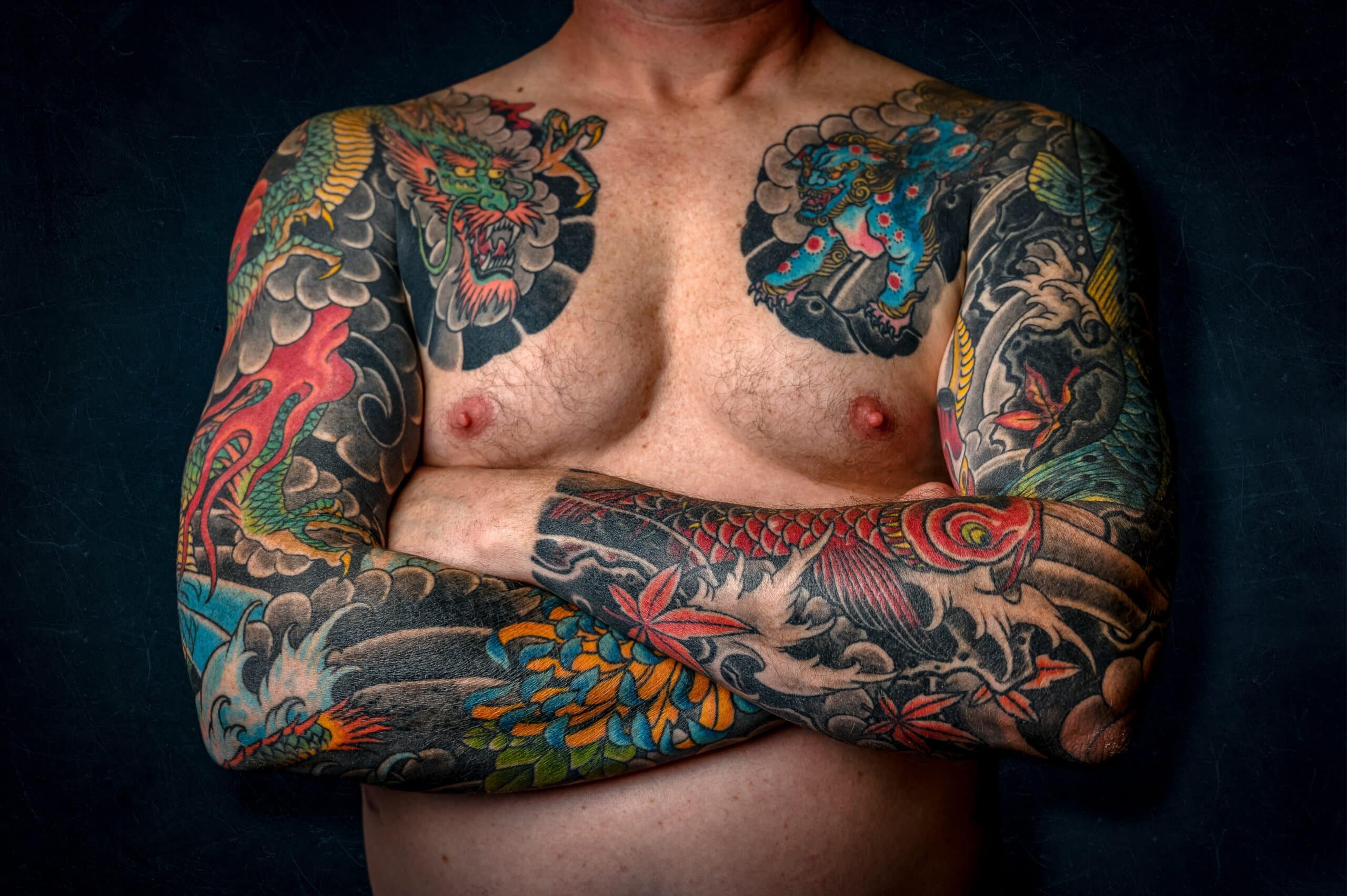
Dragons exhibit a daunting yet godlike icon and the versatility of their form expands creative translations. The oriental designs present a realistic style in dramatic details, meanwhile, in China, dragon tattoos are used to highlight the Chinese hierarchy.
Western dragon tattoos, on the other hand, depict an abstract figure with bright vivid hues. They portray a contemporary appeal. They are often featured and seen in animated films, thus, Western interpretation probes inventive imaginations.
The dragon’s coiling form makes it easy to fit any body parts, making its figure is versatile. Hence, artists have room to showcase personal styles.
Dragon Tattoo Meanings All Over the World
Let’s look further into dragon tattoo meanings all in the main dragon-loving cultures.
Chinese Dragon Tattoo Meaning
In Chinese mythology, dragons are deeply cherished, they were made as an exclusive symbol of the emperor. The imperial symbol of dragons decorated the Qing Dynasty flag because the Chinese believe that dragons represent strength.
Dragons radiate power and carry ancient wisdom, thus they are believed to be the protectors of mankind against evil. Moreover, they bring longevity and good luck as depicted in Chinese scriptures illustrating dragons ascending toward the sky. On the other hand, dragons going downward means a bad omen.
Western Dragon Tattoo Meaning
On the opposite side of the world, the Westerners believe otherwise. Dragons from a Western perspective connote plague, a menacing monster that is feared. Meanwhile, the Greeks see them as worthy opponents rather than evil. Defeating the frightening dragon is a sign of noble courage and indestructible power.
Dragons, in Nordic myths, are symbols of masculinity that portray a strong-willed fighting spirit. The Vikings adorned their Drakkar (fighting ship) mimicking the form of the formidable beast. Hence, the Nordic both fear and esteem dragons.
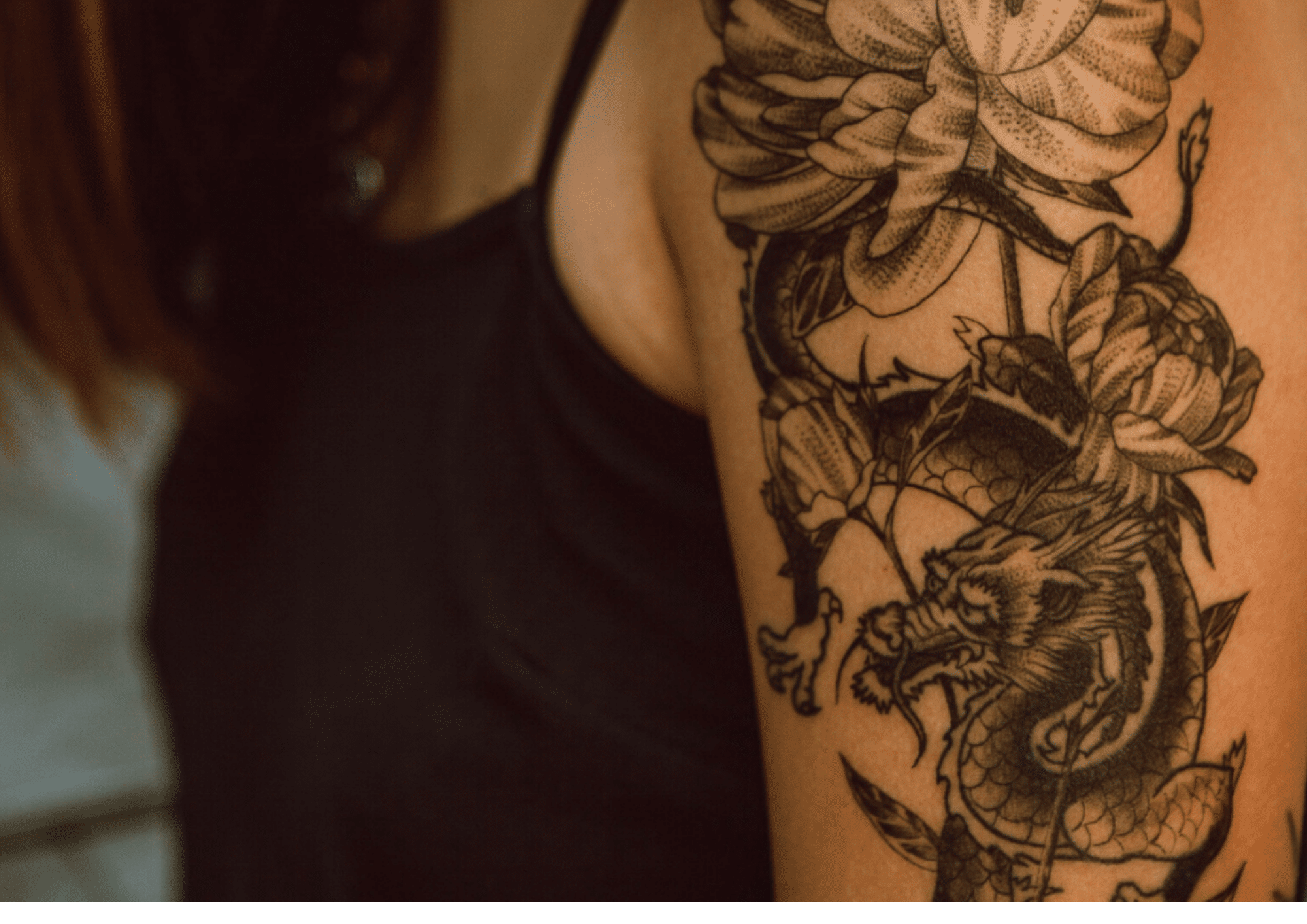
Japanese Dragon Tattoo Meaning
Dragons are majestic in Japan, seeing them as admirable creatures. Ancient Japanese culture speculates that their first emperor was a descendant of dragons. They believe that dragons are aquatic creatures that bring protection to families. Hence, the Japanese view dragons as noble guardians of their loved ones.
Some Japanese perspectives believe in flying dragons living in the sky. These soaring dragons radiate power and longevity. Japanese dragon tattoos are often paired with water because water is the dragons’ natural habitat. Hence, in tattoos water symbolizes life.
Different Kinds of Dragons in Japanese Culture
- Han-Ryu is a towering forty feet dragon adorned in stripes.
- Kai-Ryu is a small dragon beautifully rendered in hues of red.
- Sue-Ryu is the controller of the rain. It is the king of all Japanese dragons.
- Ri-Ryu is a rare breed that only a few have caught a glimpse of. Ri-Ryu carries incredible eyesight.
- Hai-Ryu came from Chinese mythology. It is a dragon bird with advanced forms.
- Fuku-Ryu is the favored amongst all of them. It brings good luck.
Celtic Dragon Tattoo Meaning
Dragons appeared in several Celtic symbols and are believed to be the guardians of the secrets of the universe. Dragons contrast the Western belief of being demonic. Celtic dragon tattoos also symbolize wisdom, balance, and spirituality.
Balance is portrayed through drawing and intertwining knots translating the Celtic’s acceptance of life’s ups and downs. The other way illustrating the cycle is a dragon biting its own tail. Thus, many Celtic tattoo designs are embellished with tribal coils and knot patterns.
Other Dragons and their Meaning
- Chinese Dragons – represent booming power, robust strength, and fear.
- Horned Dragons – the strongest among its kind.
- Celestial Dragons – the ones who protect the Gods and the heavens.
- Earth Dragons – they are the ruler of the Earth.
- Yellow Dragons – the hornless dragons and the knowledgeable ones.
- Treasure Dragons – the kingly protector of precious valuables and earthly elements.
- Coiling Dragons – the ocean dwellers.

The Colors of Dragons and Their Meanings
- Black Dragons mean reverence to one’s old and wise parents.
- Green Dragons are associated with life and life on earth.
- Blue Dragons are linked to laziness, compassion, and forgiveness based on Western viewpoints.
- Yellow Dragons are Oriental and believed to portray one’s helpful and self-centered qualities.
- Gold Dragons are the depiction of wisdom and kindness.
Dragon Tattoos and Most Common Combinations
Dragon and Tiger Tattoo Meaning
The amalgam of the two arch-enemies exhibits balance in life. A Chinese translation of the Yin and the Yang. Oftentimes, the dragon and the tiger strive to defeat each other, and such a concept presents strength, passion, and power.
Both creatures differ in how they connect with the world. The dragon portrays a more positive attitude and focuses on an in-depth understanding of the fundamentals of the world. Meanwhile, the tiger is all about winning and uses animalistic force to pull off a victory.
The relative positions of these mortal enemies matters in tattoos. A dragon on top of the tiger depicts the victory of good over evil that exhibits protection against harm. A tiger above the dragon, on the other hand, represents threatening conflict. An image illustrating the victory of evil over good.
Typically, on a brighter note, dragon and tiger tattoos are often shown off in a balanced sense. An image of both creatures merely fighting and not one of them is at advantage. Such an image exhibits equilibrium.
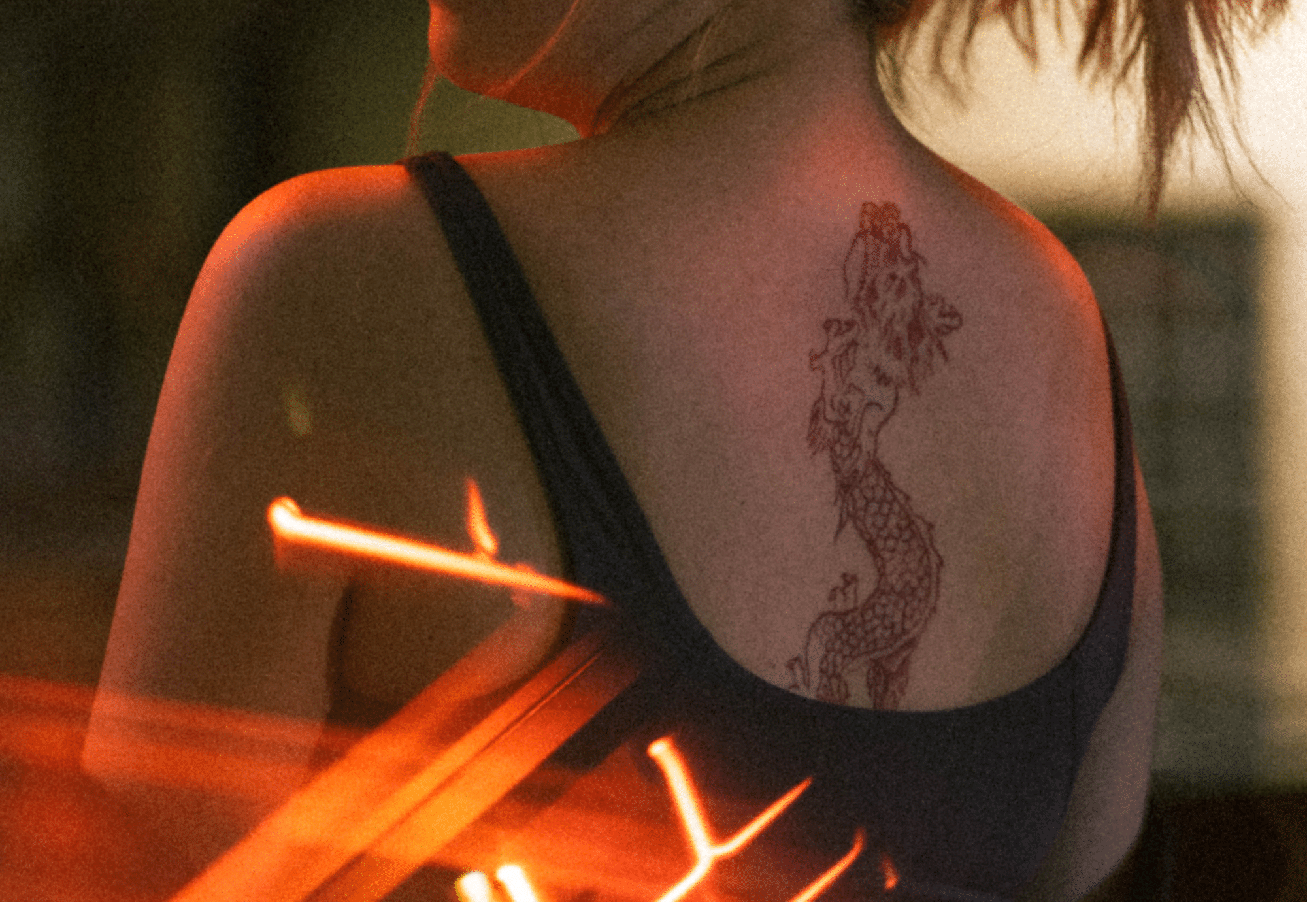
Dragon and Koi Tattoo Meaning
The dragon and Koi combination exhibits Oriental and Japanese footprints. The koi carps exude outstanding bravery that can withstand any adversities showing no signs of vulnerability and fear.
The Japanese’ love for magical realism told stories about a koi carp swimming upstream. It can ascend the Dragon Gate by the Yellow River and as it surfaces, it becomes a great and powerful dragon.
The combination of the dragon and koi is ceremonious. They represent dynamic characters formed through hard work. A kind of outlook that projects perseverance during a misfortune.
Dragon and Phoenix Tattoo Meaning
The phoenix is a mystical creature magically reborn from its ashes that represents rebirth and redemption. Phoenix tattoos often relate to a person’s life event that tells about overcoming huge adversity. The phoenix marks the person’s achievement of surpassing oneself.
The combination of the dragon and phoenix in tattoos presents a strong pair that translates an individual’s inner courage.
Dragon and Snake Tattoo Meaning
Snakes have contradicting meanings in different cultures. In some beliefs, it embodies regeneration and good health while others perceive it as evil and misfortune. These deadly enemies symbolize two opposite mindsets.
Snakes are also associated with healing that’s why it was chosen to be the icon of medicine. Dragons, on the other hand, are driven through the natural forces of nature and guided by the natural elements that envelop them.
Dragon and snake tattoos depict the strife between intelligence and intuition. It also illustrates the conflict between the traditional and modern ways or the rivalry between society and nature.
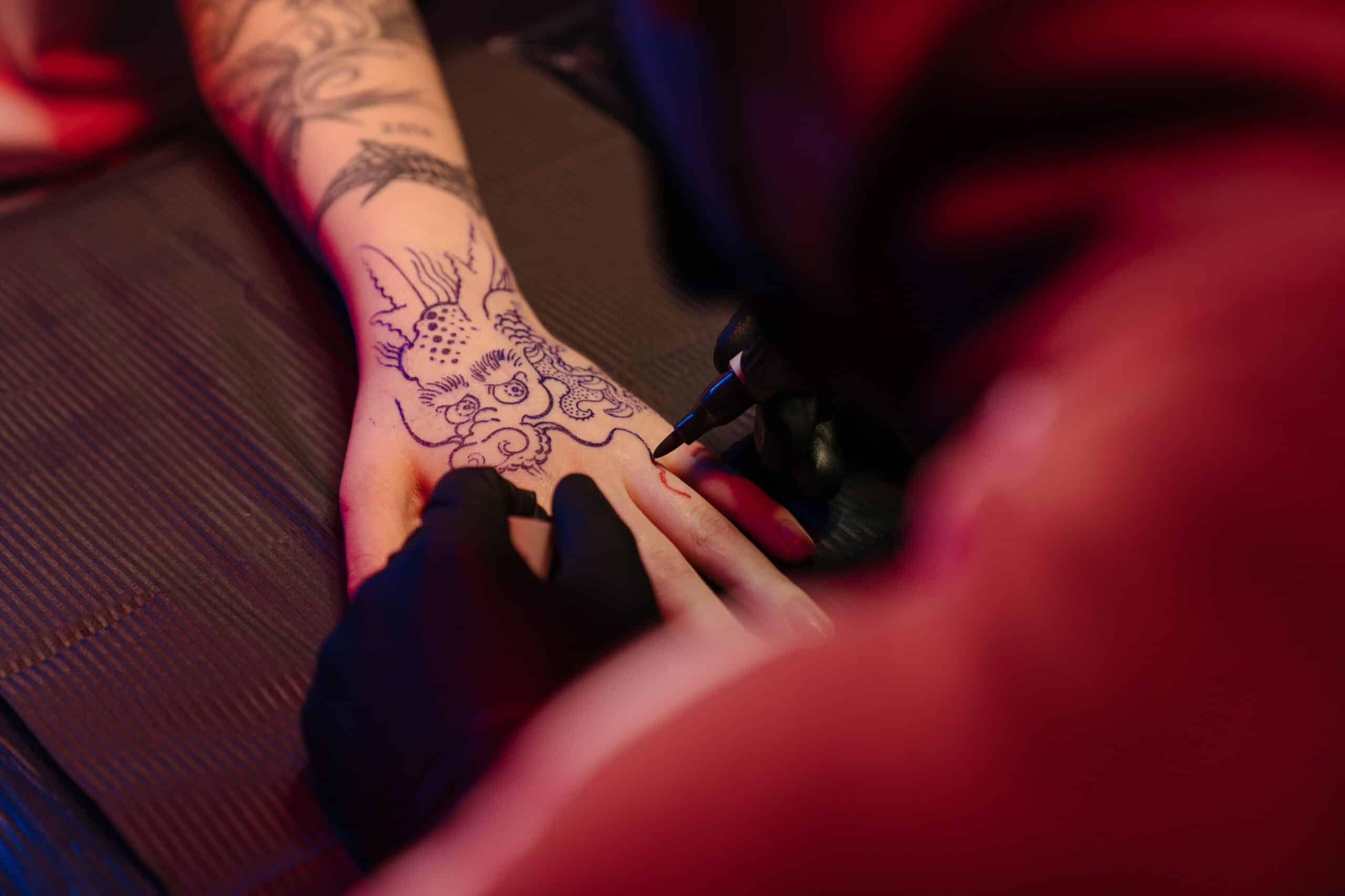
What Do Dragon Tattoos Mean? – Conclusion
So, what do dragon tattoos mean? These cunning creatures emanate a powerful sense of being, dragons are beautiful subjects for skin art because of their exemplary details.Yet, most of all, the symbolism of the dragon gives tattoos a deeper meaning, of which there are many.
Despite their menacing facade, dragons can express positive qualities. They radiate a kind of power that is influenced by natural elements. These mythical creatures carry diverse meanings. In Oriental folklore, dragons portray courageous characters that guard humankind. Meanwhile, the Celtic, on the other hand, fear them whilst seeing them as eminent creatures that are worthy of their respect.
Whatever meaning you give your dragon is up to you and is personal, irrelevant of the type or style.
Happy Tattooing
